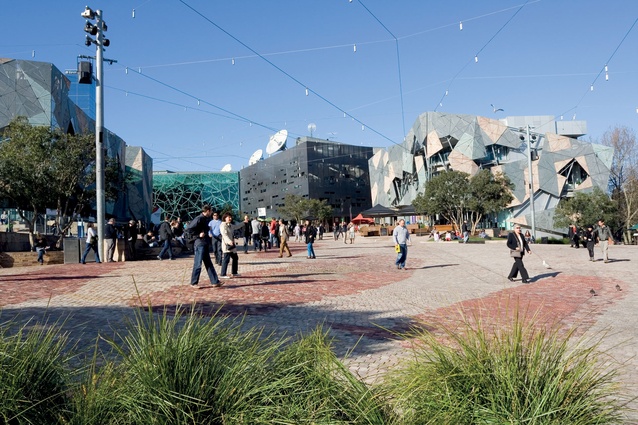Off the grid
The trajectories of walkers through the current urban landscape of Christchurch leave a different pattern to those before the earthquake. Walking in the urban centre of Christchurch before the earthquakes was an activity determined by the grid layout and the corresponding built form and so, apart from the changing window displays, the activity was fairly predictable and a journey was mostly an exercise in getting from one place to another.
The orthodoxy of the grid layout, combined with relatively long blocks, meant trajectories were uniform, spaces rationally defined and physical and visual permeability predictable.
While these characteristics support traditional urban design and planning theory that advocates order and clarity, the current state, post-earthquake, is markedly different.
The loss of built form and the dissolution of streets and roads has created a landscape of relatively undefined space and one that is highly permeable. With this new condition, the way people move in the city, the patterns they make and their experiences, are also changed. Now, an individual’s journey through the centre is likely to be more self determined and less predictable than before, and the chance of unexpected physical and possibly social confrontations has increased.
Contemporary urban theorists suggest these types of concentrated, relatively unpredictable, and largely unregulated experiences reflect and influence the dynamics of contemporary social and cultural life by supporting more diverse actions and events and a greater range of sensory and psychological thoughts and conditions.
Expanding on this notion, the theory goes on to suggest the city’s urban spaces should be able to adapt to these - constantly changing - trends. Further, and probably less contentiously, the intensity and diversity of them is often used to determine the quality of a city’s urbanity and civility.
It has been argued for a long time that city centres, when their dense and diverse social groups and activities are able to freely occupy these spaces, can become places of progressive thought and action.
Although the types of effects mentioned have rarely manifested themselves through normative planning processes, an example of an ‘ordered’ space that was intentionally disrupted to promote the types of urban experiences described above is Federation Square in Melbourne. Historically, Melbourne has often been cited by Christchurch because of the laneways that traverse the city, and which provide intimate urban spaces. However, I believe more important lessons for Christchurch’s spatial quality can be gained by recognising and observing the built form and spaces of Federation Square with their corresponding influence on social behaviour.
Before Federation Square was established the space was occupied by buildings that followed the grid and, like Christchurch’s ‘blueprint’, planning for the area assumed the grid layout would naturally continue. The architects, (Lab Arch. and Bates Smart) though gesturing to the existing traditional layout, envisaged a space comprised of ‘fractured laneways’.
These laneways for circulation are less formally ordered and more complex than the ones existing in the rest of the city and have produced a composition of decentralised space that when walked through, gives the impression the lanes are being created due to the activity of the users.
Over time, and in an abstract sense, these diverse trajectories leave their mark on the space and link what are, eventually, user-defined spaces. Additionally, ‘control’ of the space also appears to be in the hands of users and as such there appears an increased tolerance and accommodation towards diverse social behaviour in the square. For instance, it is not uncommon for groups of people to stop, converse and even flaunt themselves in the centre of the lanes or sit, lean and sometimes stand on the relatively unadorned forms lining the lanes at the same time as others are making their way to destinations. These actions form an urban scene that is a concentration of human voices, music and body actions which, together, has been described as theatrical. Both Harvey (1999) and Stevens & Franck (2007) described this type of urban space as a “series of stages upon which individuals can work their own distinctive magic while performing a multiplicity of roles” and, when combined, creates a cosmopolitan scene of “messy vitality, unpredictable intermingling of social groups and races and social and cultural forms”.
The ability of public space to possess these flexible qualities lends a robust character to the space that can subsequently facilitate and tolerate appropriation. When used in this way, spaces contribute to the spectacle and pleasure of the urban scene. While these social outcomes and spatial considerations have been written about extensively, it is time they form part of the discussion on the condition and future of Christchurch’s urban centre. With more of the city’s spaces being filled and more certainty is formed around the uses and buildings being planned, the spaces in between need to be looked at. It would be refreshing too if this discussion and planning was not constrained by a wilfulness toward preservation and nostalgia for the grid. A city’s reputation, and therefore ability to attract and stimulate diverse economic and social acativities, can be credited in large to the impressions, experiences and spectacle of activity and behaviour on the streets and other urban spaces.










